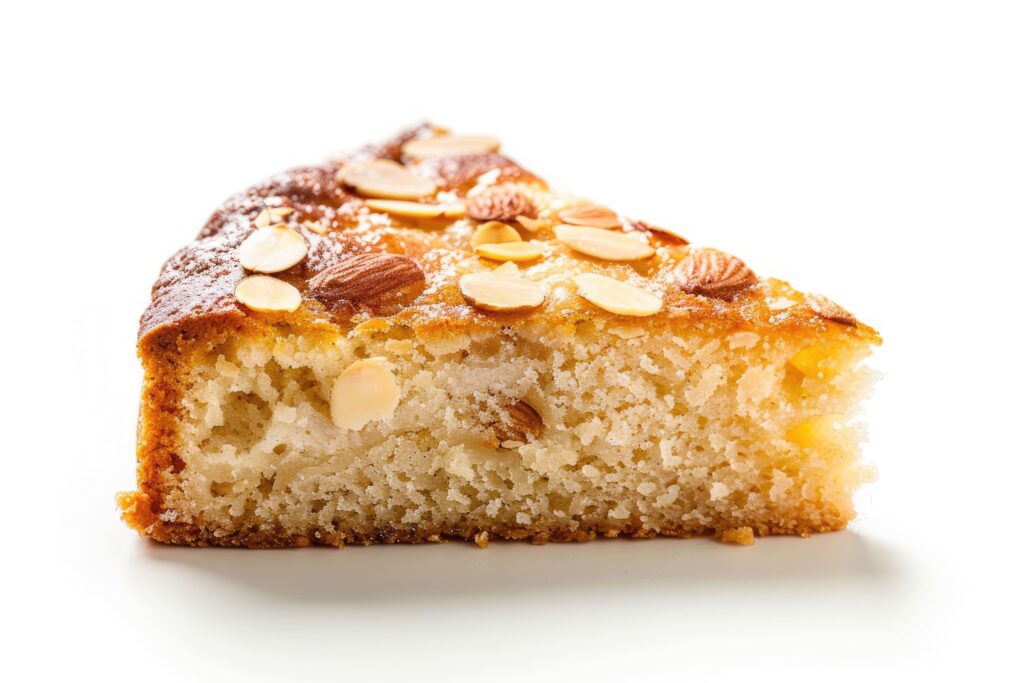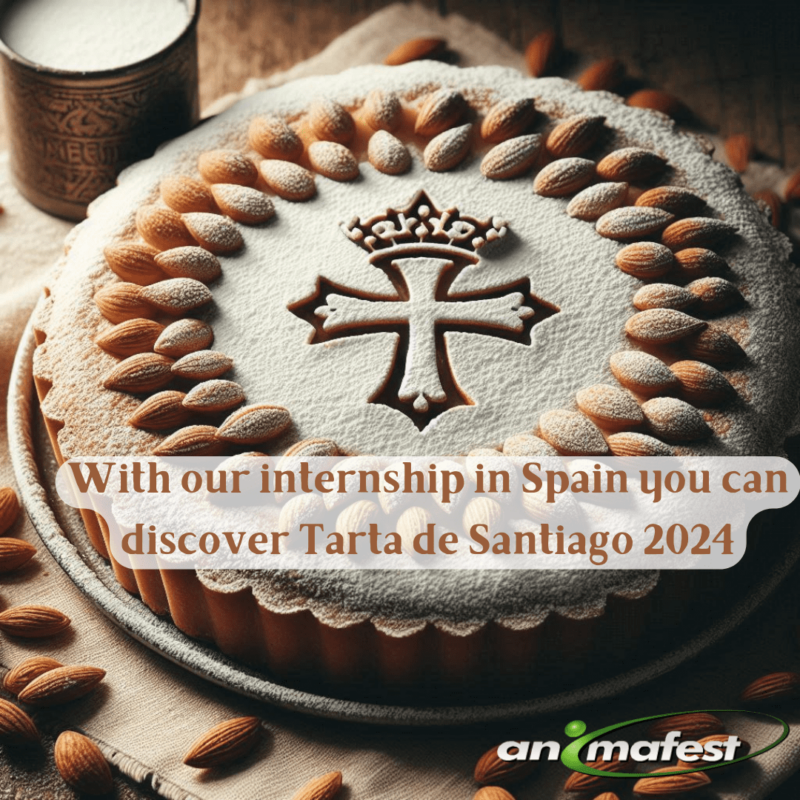Introduction
The Tarta de Santiago, which means “cake of Saint James,” is a famous dish from Galicia in Spain. In addition to being simple and delicious, its appreciation goes beyond its sweet flavour or its delicate powdered sensation; its cultural richness also lies in its historical significance. Let’s dive into some basics about this confectionery that has stood the test of time.
If you succeed in securing an internship with us, you will experience a full immersion in a rich and dynamic culture. During your internship, you will meet professionals and students from around the world, creating a global network that can be beneficial throughout your career. Enjoy the exceptional quality of life that Spain offers. With its beautiful beaches, renowned gastronomy, and lively festivals, every day of your internship will be a new adventure.

Origin and History :
The recipe for the Tarta de Santiago appeared at the beginning of the 20th century, although its roots date back to medieval times. It is part of a pilgrimage through a land traversed each year by millions of pilgrims to the Cathedral of Santiago de Compostela, where the remains of the apostle Saint James are located. This route is considered one of the most famous pilgrimage routes in the world, leading to the Cathedral of Saint James.
The first known written record of the Saint James cake dates back to 1577 and is found in the pilgrimage records. Often bearing a cross of Saint James, the cake is
covered with a layer of powdered sugar; it symbolizes the Order of Santiago, a religious and military order from the Middle Ages. Thus, this motif became the distinctive mark of the cake, forever linking it with the pilgrim tradition.
Ingredients:
Simplicity is appreciated in one of the aspects of the Tarta de Santiago. Therefore, the main components are: almond, egg, sugar, and lemon zest. Thus, it contains neither flour nor yeast, making it a naturally gluten-free cake. Here are the detailed ingredients and their preparation:
Almonds: The base of the cake is almond flour, which gives it a moist texture and distinctive flavour. Additionally, you can lightly toast the almonds for extra flavour.
Eggs: The eggs are beaten with sugar to create a light and fluffy texture. They play a crucial role in the structure of the cake.
Sugar: Used both in the batter and for sprinkling on top of the cake, sugar adds the necessary sweetness without being overpowering.
Lemon zest: Found in all recipes, lemon zest gives the cake a fresh and fragrant taste, balancing well with the sweet almond.
Cinnamon (optional): Some people sprinkle cinnamon for a subtle spicy touch. •
Preparation:
- Mixing: Mix the almond powder, sugar, eggs, lemon zest, and cinnamon to form a smooth dough.
- Baking: Then, pour the dough into a buttered mould and bake at 170 degrees Celsius (about 45 minutes) until it turns golden.
- Topping: Once completely cooled, sprinkle it with powdered sugar through a stencil resembling the Saint James’s cross.
Cultural Significance:
- Gastronomic Heritage: The Tarta de Santiago is a regional pride and an important element of the Galician culinary heritage.
- Protected Geographical Indication (PGI): The Tarta de Santiago has been granted PGI status since 2010, which means that only cakes made with a conventional recipe in Galicia can be sold
Modern Variations:
Although the traditional recipe is the most widespread, there are several modern variations of the Tarta de Santiago. Some chefs add ingredients like honey, sweet wine, or spices to experiment with new flavours. However, the simplicity and authenticity of the original recipe remain unmatched and continue to captivate palates around the world. By doing an internship in Spain, you will have the opportunity to taste this culinary delight.
Conclusion :
The Tarta de Santiago is an edible treasure that tells the story, culture, and traditions of Galicia. It is easy to make but has a very complex taste – linked to delights and at the same time associated with simple things. Moreover, as its name suggests, it reminds us of where we come from and who we are.
This dessert cannot be found anywhere else because nothing is standard. It is not just a cake or a tart that you can bake at home by following a recipe from a culinary blog – it is art, history, and philosophy in a single piece. And if you live in Spain or nearby, or whatever you do during your internship, you should come and taste Tarta de Santiago. If you want to know more about how to do your internship in Spain visit our website Animafest experience.
Apply here








